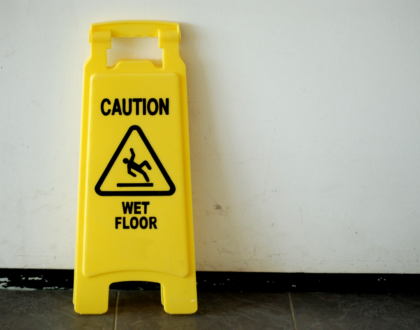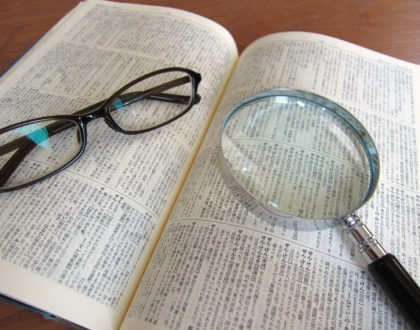Guide to the Business Japanese Proficiency Test

by Madelaine
Guide to the BJT: structure, levels, necessary skills, and when to take it.
コンテンツ
What is the BJT
Business Japanese Proficiency Test
The BJT or ビジネス日本語能力テスト in Japanese is a 135 min multiple choice test, that is assessing your ability to communicate in Japanese business situations. Passing it will get you ready to work and flourish in Japanese work environments, or so their motto promises.
Rather than general knowledge and grammar, this test is all real-life examples and the mastery of keigo. In this sense, it goes beyond simply understanding Japanese, but checks whether you can process and respond to the provided information in a timely and appropriate manner.
READ ON Learn Business Japanese and get a Job in Japan
What is being tested?
For the BJT you will need Japanese skills like listening, Kanji, Grammar, and vocabulary, but also context specific conversation patterns and styles, and knowledge of social and cultural aspects as well as business manners.
Questions will ask you to extract relevant information, summarize information properly, make the right assumptions, and more, all while staying polite and professional.
How is the BJT structured?
The BJT is divided into three parts: listening, listening and reading, and reading. Sounds confusing but stay with me for a second. Each part is made up 25-30 multiple choice questions, with four answer options to choose from. Questions and options are only written for some sections.
Listening
The listening section comes with pictures. Questions and answer options are not written, so pay attention to the recording.
1. Situational Understanding: Identify what is happening in a picture.
2. Conversational Listening Comprehension: Identify the correct expression based on a picture
3. General Listening Comprehension: Answer a specific question about the conversation
Listening and Reading
In this section, the questions are not written. It is checking your ability to process information from different sources.
1. Situational Understanding: Identify what is going on from the recording and a picture.
2. Information Listening and Reading Comprehension: Identify answer based on a recording in additional documents, like graphs.
3. General Listening and Reading Comprehension: Recording and document from which to extrapolate the answer.
Reading
The reading section comes with surprisingly little reading.
1. Vocabulary/ Grammar: Fill in the most appropriate word or grammatical expression.
2. Expression Reading Comprehension: Fill-in-the-blanks section, checking business and polite expressions.
3. General Reading Comprehension: Answer questions about longer texts.
How is it scored?
Now most of us are familiar with JLPT scores, but what about the BJT? The BJT is more similar to the TOEIC than the JLPT in that you don’t apply for a specific level, but there is only one test for everyone. The total score correlates to your level. To assess the level properly questions are weighed differently according to their difficulty.
Levels
| Level | Points | Skills |
|---|---|---|
| J1+ | 600-800 | Able to communicate sufficiently in Japanese in any business situation |
| J1 | 530-599 | Able to communicate appropriately in Japanese in a wide range of business situations |
| J2 | 420-529 | Able to communicate appropriately in Japanese in a limited range of business situations |
| J3 | 320-419 | Able to achieve some degree of communication in Japanese in a limited range of business situations |
| J4 | 200-319 | Able to achieve minimal degree of communication in Japanese in a limited range of business situations |
| J5 | 0-199 | Virtually no ability to communicate in Japanese in business situations |
The majority of people tests in the J2 and J3 levels, peaking at 450-459 points.
JLPT or BJT?
Level
If you are still learning Japanese then I recommend to stick with the JLPT and try the BJT once you passed N1 or at the very least N2.
According to test-taker data, N1 holders got significantly better results than N2, their results range widely between 300-700 points. That means that despite their near native-level command of Japanese many only have some or appropriate communication skills for a limited set of business situations.
Popularity
Another reason I recommend to take the JLPT first is that the JLPT is much more well-known and many companies ask for the score. Getting the BJT in addition however will be a big asset.
How to take the BJT
Cost
The BJT is a computer-based test and can be taken at test centers in various countries. The fee is 6,999 Yen when taking the test in Japan, abroad fees might vary. With the BJT you don’t have to wait but can get your results immediately after the test. Only the official certificate will take a few days to get issued.
Location
You can take the test at test centers in:
Japan: Sapporo, Sendai, Koriyama, Tokyo, Chiba, Yokohama, Niigata, Hamamatsu, Nagoya, Osaka, Kobe, Okayama, Hiroshima, Matsuyama, Kitakyushu, Fukuoka, Oita, and Naha
Outside of Japan: China, Taiwan, Korea, Indonesia, Malaysia, Myanmar, Singapore, Thailand, Vietnam, India, Mexico, Brazil, and France
Time
The test can be taken on weekdays and weekends and with starting times available throughout the day in 15 min intervals. With that much choice, you should be able to find a convenient time slot for you. Weekends can get booked out quickly, so consider to reserve as soon as possible.
Sign-up
Registration for a test date opens 2 months in advance. To take the test, create an account and sign-up here.
After filling in your personal information and answering a few questions on your Japanese level, you can pick your country, city and a choice of up to three test centers (website is in Japanese) before selecting your starting time.
There is no limitation on how often you can take the test, but it can only be taken once every 3 months.
How can I study for the BJT?
The official site also has example questions for the BJT and also runs a Facebook page with more information you can check out. For in-depth preparation consider getting a Business Japanese textbook with practice exercises and study strategies.
Whether you do it to find a job or just to see how you fare, studying for the BJT will give you an edge on your Japanese in general.
You want to work in Japan?
Learn Business Japanese while getting started with your job-hunt!
Find out more Business Japanese School in Tokyo



